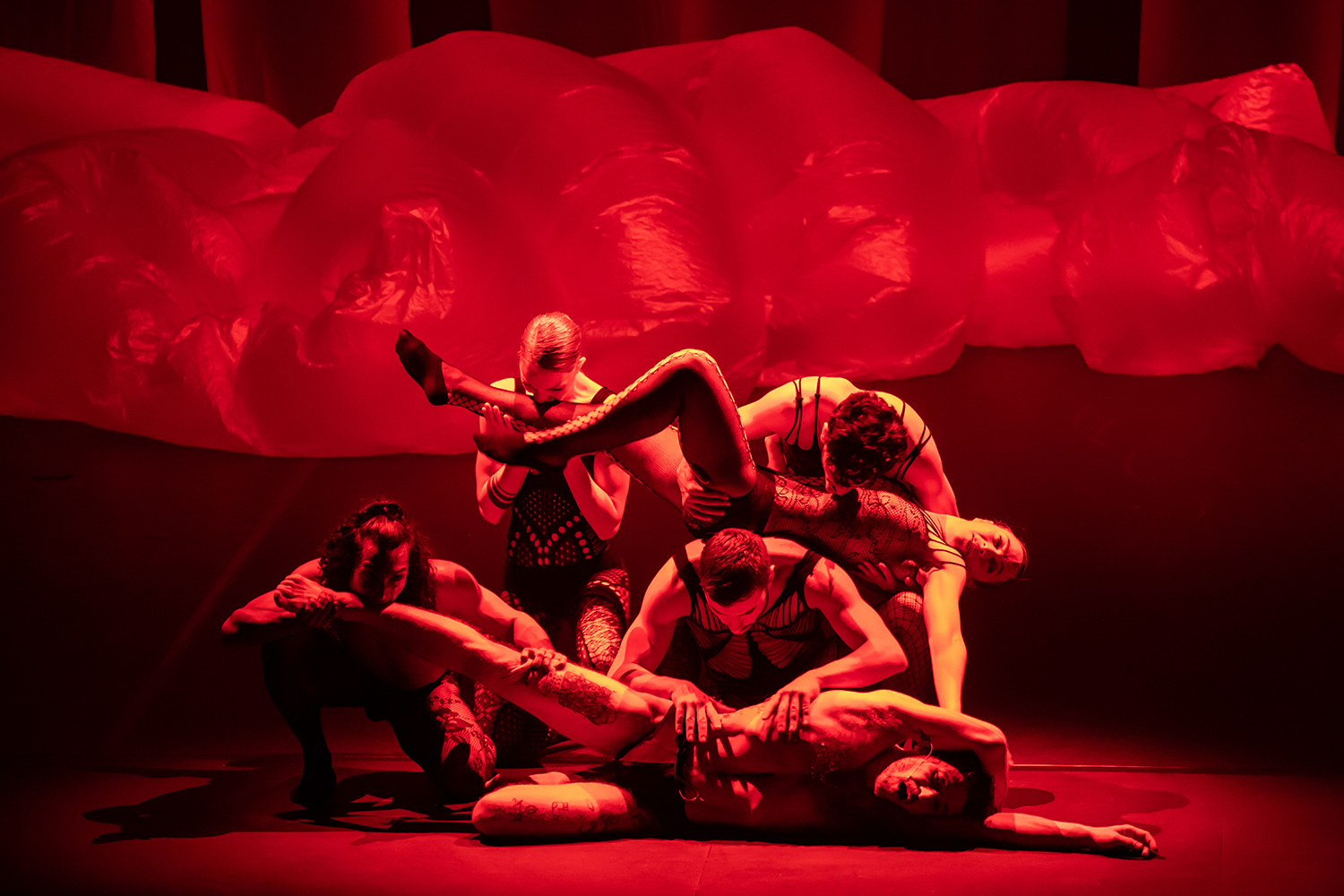
Moor Krad
By: Ertza company.
When: 3 October.
Where: In the Muxikebarri room of Getxo.
---------------------------------------------
Two years later I met the work Moor Krad, in which members of the company Ertza created and premiered the piece. So in 2022, I tried to understand what the performance wanted to express through the words of the choreographer Asier Zabaleta. Later, I had to turn the colloquium I had with Zabaleta into text. Today I have had the opportunity to see the information that I received at that time in the appropriate format. Today, the Dantzaris who have acted at Zabaleta’s orders will act in the language correspondiente.En words of their creators, Moor Krad is a staging proposal born with the intention of observing the dark side that we all have and
that we often want to deny. Dark Room. Following this game, the Muxikebarri room seemed to me a very suitable place for the staging of the piece. The room is black, the black chairs, the black tablate and the curtain too.
On stage have been the four dantzaris and the lyrical singer Iosu Yeregi. The light that Yeregi has in her hand is the only beam that you see in the dark, and the game of shadows and shadows of the spotlight is enough to show the first signs of what's coming. The movements of the dancers, often threaded together, seemed threatening to me. In any case, the dancers live free, without hiding.
Yeregi's voice and body are somehow responsible for guiding history. Yeregi embodies us, embodies the individual looking toward the dark side of oneself. Even though the dance listens to a very strong music, Yeregi's song is dressed in a very special way. Zabaleta has acknowledged that Yeregi’s work is fundamental in acting: The Lyric singer has sung several pieces of Baroque composers such as Henry Purcell and John Dowland live. As for melodies, the classical pieces have been transferred to the field of electronic music. Besides singing, Yeregi has danced, integrating with professional dancers.
Yeregi has a complicated relationship, as we all have, with dantzaris representing its dark side. Interestingly, many of the sequences dress with seductions and violence, or at least are the easiest to identify.
Artists have created a powerful series of scene sequences. Sometimes close, sometimes far away. Sometimes hugged, sometimes fighting. Is it something like relating to the hidden part of oneself? Sometimes, perhaps, we accept it. But in most cases, reject it. And so what happens when we look at our hidden side? Where does it take us?
Azaroan estreinatu zuen bere lehenengo lana Nagore Tamayo dantzariak (Tolosa, 2000): Nondik abiatu inora izena du, eta Natalia Belén dantzariarekin batera gorpuztu du. Bere herrian egin dugu hitzordua, Zumardi Handian.
Festa egiteko musika eta kontzertu eskaintza ez ezik, erakusketak, hitzaldiak, zine eta antzerki ikuskizunak eta zientoka ekintza kultural antolatu dituzte eragile ugarik Martxoaren 8aren bueltarako. Artikulu honetan, bilduma moduan, zokorrak gisa miatuko ditugu Euskal Herriko... [+]
The idea that we in the dance world often repeat is that dance is ephemeral. The Elhuyar dictionary gives as a counterpart to "ephemeral" English: ephemeral, destructive, perishable, ephemeral, ephemeral, perishable, perishable, ilaun. I don't remember who I first read that idea... [+]
Transmisioa eta dantza taldeetako erreleboa aztertu nahi izan dugu Dantzan Ikasi topaketetan, eta gazte belaunaldiek lan egiteko ereduak ezagutu nahi izan ditugu “Gazteen parte-hartzea euskal dantzan” mahai inguruan: Eder Niño Barakaldoko... [+]